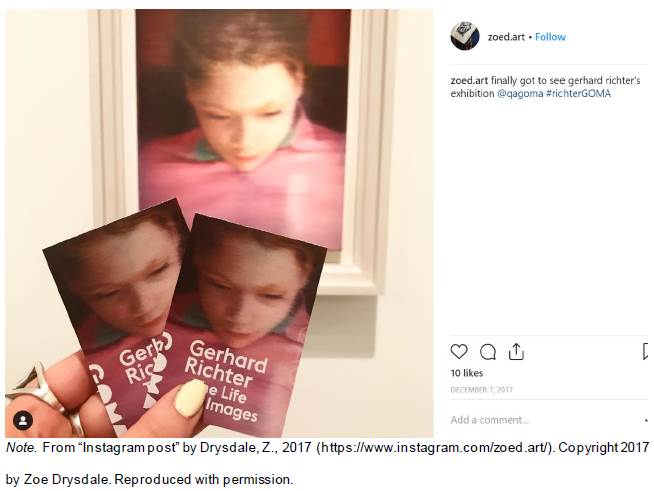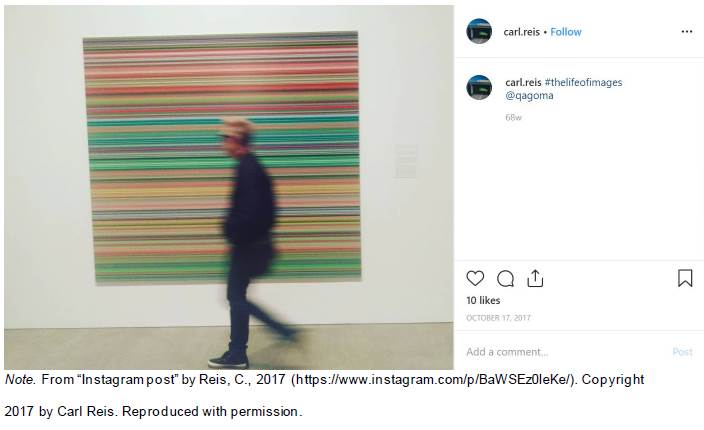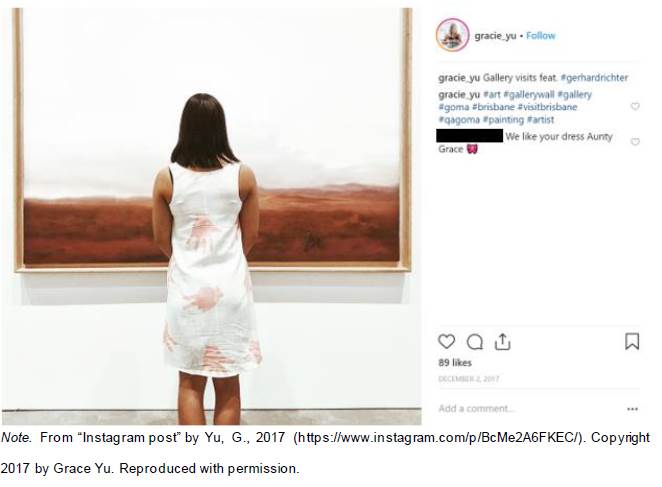Smartphones might be ruining our sleep, but they could also be deepening our experience of viewing art according to a Griffith University study.
By tracking the hashtags used for the 2017 Gerhard Richter: The Life of Images exhibition at the Queensland Art Gallery of Modern Art (QAGOMA), Adjunct Lecturer Dr Adam Suess from Griffith Business School, who completed the study as a PhD candidate at the School of Education and Professional Studies, looked at how visitors shared and experienced art through the lens of Instagram.
More than 550 exhibition images posted to Instagram were included in the study, alongside interviews with 17 visitors and four QAGOMA staff including exhibition curator Dr Rosemary Hawker from Queensland College of Art.
According to Dr Suess, the photo sharing social networking app on our phones has transformed our collective and individual experience of art galleries by giving us more time to simply look at art.

Photo: Zoe Drysdale
“Participants reported their aesthetic experience was starting earlier and finishing later,’’ he said.
“They might have seen a post from their friend who went to the exhibition or decided to attend based on looking through what others have shared. But their visual experience has already started before they’ve seen the artwork in person.”
After attending the gallery and taking their own photos, Dr Suess said many people held off posting immediately.
“They went through a creative incubation period, where they assessed up to a week later the 30 or 40 videos and photos taken, combing through to find which ones best reflected their experience.”
“But this extended time viewing the artwork deepens an appreciation of it and the artist, but through a phone screen.”
He said Instagram’s ability to edit photos allowed research participants to engage their creative side and transform their aesthetic experience into something more personal.

“One participant overlaid two Richter paintings to create a superimposed image. Another person mimicked the artist’s preference and style for blurring objects, so he walked in front of a painting and left this blurred trail behind him.
“By using your smartphone’s capabilities modified through the use of Instagram, research participants were really evolving their aesthetic experience and making it a bit deeper and more meaningful.”
Despite the overwhelming use of Instagram by visitors, Dr Suess found it wasn’t the primary consideration for curators.
“Dr Hawker told me she wanted to create visually arresting moments that provoke awe through the use of lighting, placement and sightlines, but that focus ends up creating the perfect Instagram experience without even thinking about the app itself.
“When I interviewed marketing staff the approach was completely different. They have a lot of very smart people in this space with an incredible level of social media knowledge.”
“They know where the ‘Instagrammable moments’ are and that was really apparent during the Marvel exhibition which ran earlier in the same year.”
- Photo: Zoe Drysdale



